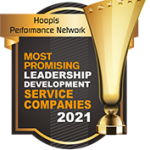The Power of Storytelling

Since LinkedIn launched in 2003, the professional social networking site has grown to more than 630 million registered members. In addition to the basic and premium services, LinkedIn Talent Solutions offers LinkedIn Recruiter, a platform to search, connect with, and manage candidates. Regardless of which level you use with LinkedIn, it can be a powerful tool for finding new associates for your agency and remains the preferred method of recruitment for most businesses. Facebook and Instagram are gaining in popularity, especially to reach younger applicants who aren’t as active on LinkedIn. Yet, for agencies who are beginning to use social media as a recruiting platform, or for agencies who are looking to expand their social presence, LinkedIn is the place to start. Here are some guidance tips to use when using LinkedIn to recruit new associates for your agency:
Make an Attractive Company Profile
Your company profile on LinkedIn often serves as a candidate’s, or any other viewer’s, first impression of your business. Take the time to provide ample information about your company and make your profile look professional. This includes providing information about the types of coverage you provide, but you should also link to your agency’s website and blog. Utilizing videos to explain your opportunity, can differentiate you from the competition as well. Showcasing your producers can also be a strong tool to attract candidates. If candidates are actively searching, a more detailed profile will place you higher in LinkedIn’s search results. You should also have a title and summary which contains keywords in a detailed explanation of your business. Most importantly, when your profile is continuously updated and appears professional, it sends a message about your expectations in terms of quality – a high-quality profile draws high-quality candidates.
Post Content Regularly
When using LinkedIn as a recruiting tool, you need to post regular content in the same way you would if you were prospecting for clients. This includes posting relevant and interesting blog posts, images, news articles, and videos, but the types of content should be geared towards attracting candidates. You can post items about hiring trends in the financial services industry, how to choose the right agency, the importance which your firm places on training and development, benefits associated with being a financial professional, or anything you think a candidate would want to know. These posts don’t need to be specific to your company; instead, they should seek to educate and inform potential candidates about why becoming part of this profession might be the right choice for them. Interested users will engage with your posts and visit your company profile, where they can learn more company-specific information.
Engage in LinkedIn Groups
LinkedIn has a group for almost any type of profession you can imagine. You can find general groups for insurance agents, as well as groups based in a particular city, state, or region. If you cannot find a financial professional group in your area, create one so you can use the platform to your advantage. But, beware; it’s bad etiquette to drop a bunch of job postings in a group when you don’t interact or engage. Make sure to participate in any groups you join. Participation also helps build brand awareness which has benefits far beyond recruiting. You can share industry-related content that others might have interest in, or post-discussion-provoking questions about the industry, recruiting, or working at an agency. You could also just make thoughtful comments and ask questions on items other group members post.
Post Open Positions on LinkedIn

Recruiting new agents on LinkedIn requires posting your open positions. The platform has a few different avenues for job postings. As previously mentioned, you can post jobs in groups, but be careful not to spam a group with postings, and make sure you remain actively engaged with the group. Group postings are free and can easily get you in front of people who are interested in the industry. If you have built your company profile so that your followers contain a large group of people who might be potential candidates, posting an update to your company page with a link to your job posting is a powerful way to generate interest. Each time you post, your followers will see that post in their newsfeed and can respond accordingly. You can also post a paid LinkedIn job advertisement; this comes with a curated list of potential candidates who match your requirements and the capability to send private messages to those potential recruits.
Target Passive Candidates
One of the tremendous benefits of recruiting on LinkedIn is the ability to target passive candidates, especially when using LinkedIn Recruiter. Most users on LinkedIn are not actively seeking a job. Yet, if they received a great offer or a lucrative opportunity, they would be interested. LinkedIn allows you to carefully target candidates based on their work experience and skills which they have detailed in their profiles. Once you have found a list of potential passive candidates, you can message them directly on the platform. Be sure not to use impersonal templates or form letters, which don’t inspire candidates to check out the opportunity. Instead, personalize messages after reading their profile, while keeping the initial contact short.
Use LinkedIn Metrics to Tweak Your Approach

If you want to pursue a data-driven approach to recruiting, take the time to explore LinkedIn Recruiter’s search insights. One of its biggest benefits is the ability to hire managers and recruiters to analyze and understand talent pools related to the insurance sector. Understanding where the most successful talent comes from helps you target candidates who you have more of a chance of retaining after you invest money in training them. Also, users can delve into one particular talent pool and analyze data about the market, so they can understand how recruitment from a particular pool is working for their agency. Knowing this data allows you to tweak your approach. This might mean casting a wider net or adjusting other aspects of your job posting.


